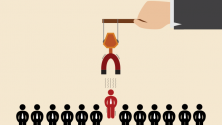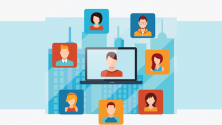Editor’s note: In this series, we are sharing tips to help IT professionals manage their stress - and guide their teams through challenging times. Here, David Egts, chief technologist of Red Hat’s North America Public Sector, shares why and how he avoids Zoom fatigue with his team.
Why opt for voice-only meetings vs. Zoom calls
Connecting with people via phone instead of video gives me a cognitive break. I can walk away from my desk, move around, and even sit on my deck and get some sunshine.
Video is a great way to read emotional cues, but phone calls can sometimes provide better focus since I can close my eyes and focus on their words. Getting away from my desk also helps remove the temptation to check email or do other multitasking.
[ If you have to have a video call, make it better. Read: Zoom tips: 6 ways to make meetings better. ]
Reduce guilt: Reconsider a "cameras-on" policy
Leaders should consider revising the team norm of "cameras on by default" to "cameras on by default preferred, but not mandatory."
Sometimes people have difficulties maintaining a work/life balance. They may feel uncomfortable turning their camera on at the moment as their hair is ruffled, toys are everywhere, kids are chasing the dog instead of doing their schoolwork, etc. Making video on preferred but not mandatory (and not calling them out for leaving their camera off) provides the psychological safety teams need to balance work and life without guilt.
[ Want to help people be intentional about time and energy? Read also: COVID-19 leadership lessons: 5 ways to help your team recharge. ]
Take control of personal stress with mindfulness
Even with reduced video meetings, stress happens. I recommend taking a mindfulness class, watching YouTube videos about it, or downloading a mindfulness app. Calm and Headspace are popular apps, but there are also free apps from the Veterans Administration and other unexpected places.
Mindfulness forces people to take a break and quietly reflect on what's most important. By focusing on what's most important, you can be more proactive about what's most important to you instead of being reactive to others. Consider what the flight safety video says about oxygen masks: You need to take care of yourself first so you can better take care of others.
[ Are you leading culture change? Get the free eBook, Organize for Innovation, by Jim Whitehurst. ]






